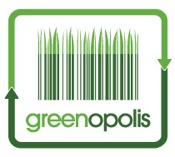How I Learned to Stop Worrying and Love Plastic
Reuse it again and again; not go looking for “natural” alternatives to everything.
How I Learned to Stop Worrying and Love Plastic
As I left NYC after our Times Square Greenopolis Recycling Kiosk / Pepsico Dream Machine launch to fulfill a speaking engagement in Ottawa, I saw buildings in Brooklyn crossing the East River that were covered in ivy several stories high and blocks wide. It was a reminder that if we take our foot off the neck of Ma Nature she will respond with lush new growth. How can we transform everywhere into Eden once again, with not just two people, but 7 billion of us?
Restoration is impossible — we cannot go back to a pristine state that likely never existed anyway. Native peoples have been terraforming the planet long before the industrial age. The advent of agriculture transformed whole landscapes. What the first Europeans saw upon entering the “New World” was a landscape that had been altered for thousands of years by the millions of native peoples that lived here. It seemed empty and pristine mainly because European disease spread ahead of explorers and wiped out native populations before conquistadores ever arrived. We had about 500 million people on the entire planet until about 1800. Now in the space of 200 years- a blink of the eye in ecosystem time- we’ve shot to 7 billion, 14 times more than ever before. How will we feed, clothe, house and welcome those children that are already here and soon to be born?
We need to conserve every living system that we can, and harvest renewable resources judiciously, within their capacity to regenerate. Otherwise we’ll overshoot our habitat’s carrying capacity, and like fruit flies in a test tube, wipe out what we depend on. With 7 billion of us, we can’t go back to a hunter gatherer lifestyle or even live off the land in a pristine state- we’d overhunt, fish, outstrip the land.
Which is why I love plastic. We need to take what we’ve already extracted and reuse it again and again- not go looking for “natural” alternatives to everything. Don’t get me wrong — toxic materials should stay in the lab and controlled manufacturing processes, not in our homes and the environment. But plastics like PET and HDPE and PP (soda and milk jugs and yogurt tubs, oh my!) are not harmful materials and can be made- and remade safely again and again. They are light and strong, and we’ve already pumped the oil, gas and coal that made them. We should use all the plastics and metals we’ve dug up and created for durable goods and containers to bring our food, soap, drinks, and other products again and again. There aren’t enough gourds to go around, and they don’t transport easily. Use food for food, not materials. Use wood and other natural building materials sparingly within the reproductive limits. Use clay, ceramics and glass locally for local markets to save the energy of shipping heavy stuff. And use plastics, aluminum and steel for carrying the things we need to ship long distance, for our homes and autos and computers. Capture every bottle, every can, every bit of packaging and reuse it again and again.
The thing we learned to hate about plastic should be the thing we learn to love- it never goes away. Unlike “true love”, plastic is forever. Let’s use that to help 7 billion of us live lightly on the planet, and we conserve every resource we can. Disagree with Joe Laur? Let him know here.
Greenopolis.com is dedicated to our users. We focus our attention on changing the world through recycling, waste-to-energy and conservation. We reward our users for their sustainable behaviors on our website, through our Greenopolis Tracking Stations and with curbside recycling programs.
GREENOP6330

